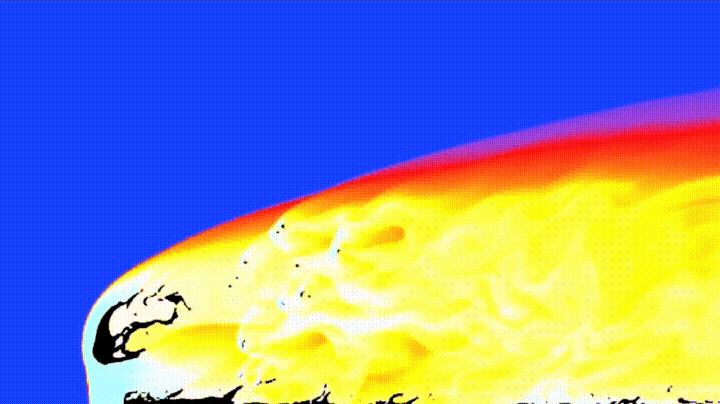When a colossal 65-foot-wide (20-meter-wide) asteroid spectacularly combusted in the skies above the Russian city Chelyabinsk on February 15, 2013, the explosive shock wave was captured on video by dashcams, security footage, and countless smartphone-armed bystanders. Slamming into the atmosphere at 20 kilometers per second (45,000 miles per hour), the 10,000-ton object unleashed the energy of 30 nuclear bombs when it burst, causing injuries and structural damage within the blast radius of about 60 miles.On Thursday, NASA released one of the most detailed simulations of the asteroid's dramatic flameout to date (at top), created by the agency's Pleiades supercomputer at the Ames Research Center. The short sequence used the aerodynamics software Cart3D to recreate the atmospheric entry and rapid deterioration using a delightfully psychedelic color scheme. Behold, the last act of an errant space rock.As the asteroid, represented in gray, streaks through the skies, it is enveloped by orange, yellow, and red tendrils that visualize the shock wave building up. Bits of black material break off of the main body of the rock, and it crumbles under the pressure of the atmosphere, until it's finally shattered into fiery pieces. The simulation was created as part of the Asteroid Threat Assessment Project (ATAP), a NASA group dedicated to monitoring impact risks and developing emergency plans for future encounters.
The simulation was created as part of the Asteroid Threat Assessment Project (ATAP), a NASA group dedicated to monitoring impact risks and developing emergency plans for future encounters.
Advertisement
As the largest airbust since the 1908 Tunguska event, the Chelyabinsk meteor is a wake-up call about the need for planetary protection programs like ATAP, to help us avoid the fate of the dinosaurs.Get six of our favorite Motherboard stories every day by signing up for our newsletter.Read More: The Underfunded, Disorganized Plan to Save Earth from the Next Giant Asteroid
